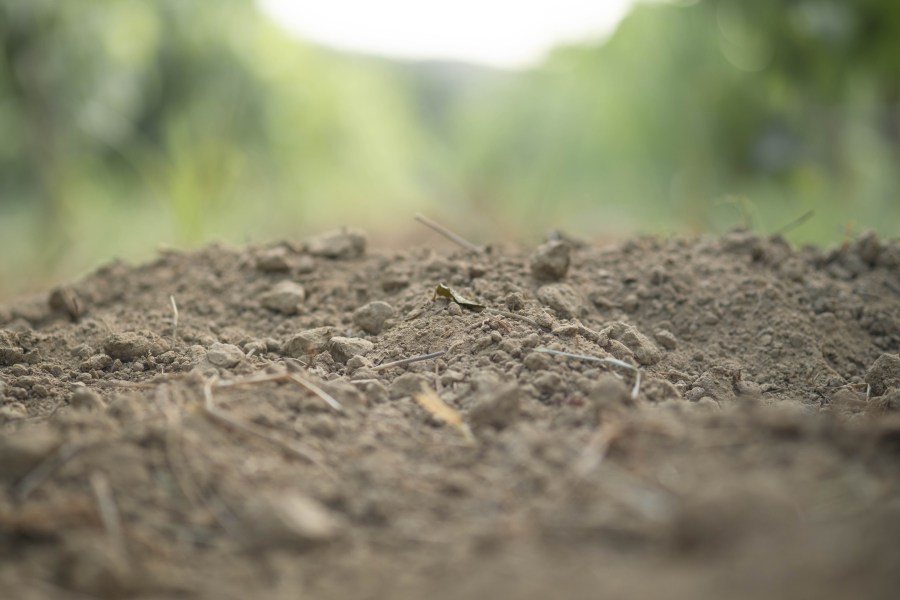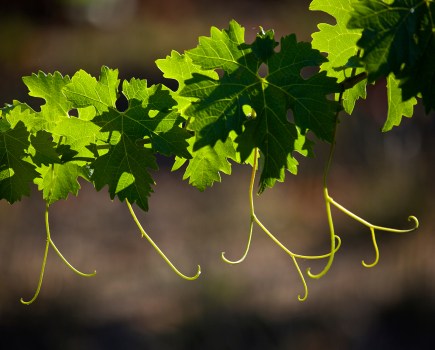Post-harvest is an ideal time to rectify any soil issues and prepare ground for the months ahead, as Hutchinsons agronomist Will Robinson explains.
Day-to-day vineyard operations can be hard going on soils, with machinery concentrated into relatively narrow areas between rows, raising the risk of compaction, especially in wetter seasons, such as 2023-24.
It is not just machinery; concentrated footfall from manual operations, such as pruning and tying down canes during the dormant season – often when soils are wettest – also risks compacting soil around vine roots.
Given the warm, dry season just experienced, and with picking, and post-harvest sprays likely to be completed earlier than normal on many sites, there is a good opportunity to look closely at soils and rectify any issues – from this year or previous seasons – while ground conditions allow.
Compaction restricts root growth, bringing all the associated impacts on water/nutrient uptake and vine vigour, and can also impede drainage and surface infiltration; neither of which are good for vines, so need addressing.
Target actions
Before doing anything, it is vital to understand if there is a problem, and if so, the nature and extent of the issue. This is best done by digging inspection holes in areas suspected of, or at high risk from compaction, poor drainage, etc.
Going straight in with a subsoiler at 6” deep when the compacted layer is only 4” down, for example, means the point of the subsoiler is not lifting and shattering the right area of soil and could make the compacted layer deeper and thicker, exacerbating problems rather than rectifying them.
If subsoiling is required, ensure it is at the correct depth and only do every other row this season, returning next year to subsoil the rows missed. Subsoiling inevitably causes some root pruning, which if done to both sides of the vine at the same time, may cause too much shock, leading to weakened growth.
Once the compacted layer is broken up, the key is to quickly stabilise that structure, to avoid air pockets collapsing when ground is next travelled on, potentially resulting in an even tighter compaction zone than before. This is best done with living roots from an overwinter cover crop or other vegetation.
Species choice depends on what you want the cover to achieve. On some sites, for example, legumes, such as beans, with their deep taproot and many lateral roots, or vetch, with its more fibrous root system, could be useful options for later sowing, and bring the added benefit of nitrogen fixation, which will be released when cover is terminated in the spring. This extra nitrogen may not suit more vigorous sites though, where a better option might be to cut back top growth by mowing, cultivate, and then establish something like wild radish, with its deep-penetrating tap root. On sites where excess vigour is the problem, experience suggests chicory is the most de-vigorating cover crop, but be prepared to terminate it if it is too effective.
Managing the undervine strip
There are generally two established ways of managing the undervine strip, each with its own pros and cons.
One is to maintain a clear area, free from weeds or other vegetation, to minimise competition, improve airflow, and help the ground warm up faster in spring. Autumn is one of two key periods for vine root growth (the other being pre-bud burst once soil temperatures reach 10C), so reducing competition for nutrients around this time should be beneficial.
Bare ground is however less ideal from a soil health perspective, so retaining some cover in the under-vine strip until closer to the main frost risk period may be preferred, protecting soil during wetter months and providing substrate for soil organisms during this period.
Keep control of vegetation though, as we cannot expect a single herbicide application in spring to fully control large, well developed weeds that have been growing since autumn. This may mean regular mowing, and/or, on particularly weedy sites, a staged approach to herbicides, using different actives.
Propyzamide (as in Kerb) is one option that can be used within the vine row between October and 31 January. It is slower-acting than other chemistry, taking several weeks for growth to die back after treatment, so may provide some soil protection and substrate for soil organisms during this period. It also reduces reliance on glyphosate, thereby helping to manage any potential resistance risks associated with unbroken glyphosate use.
Discuss other options for managing weeds and protecting soils with your agronomist.




